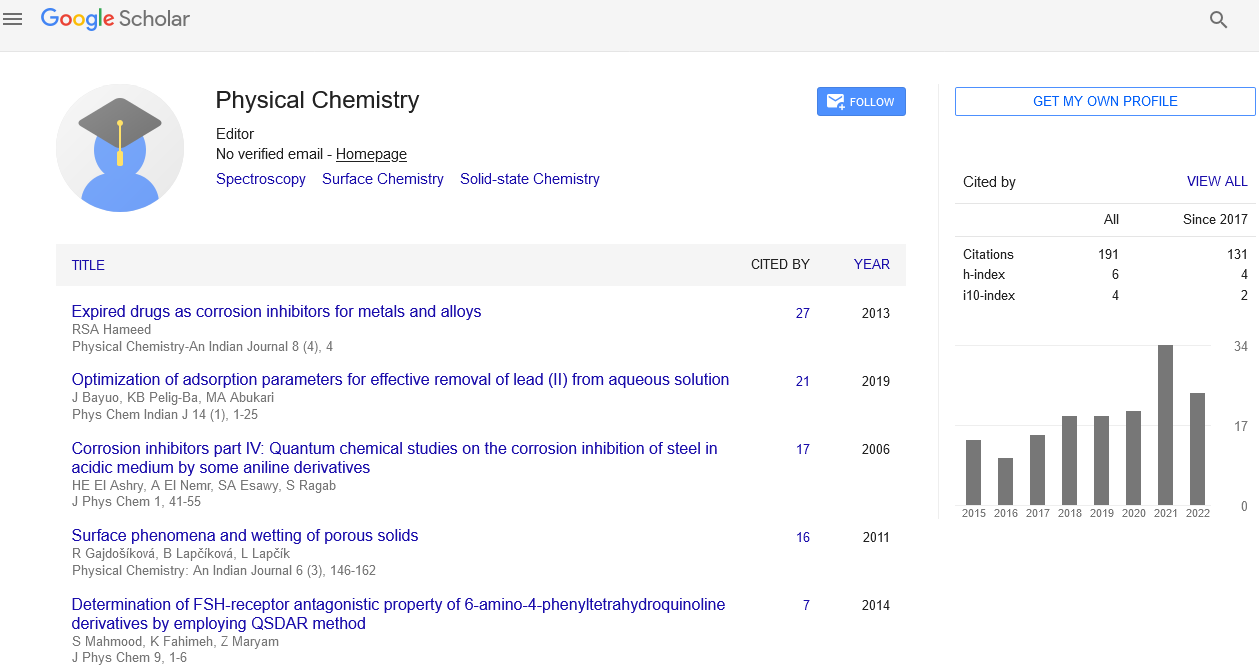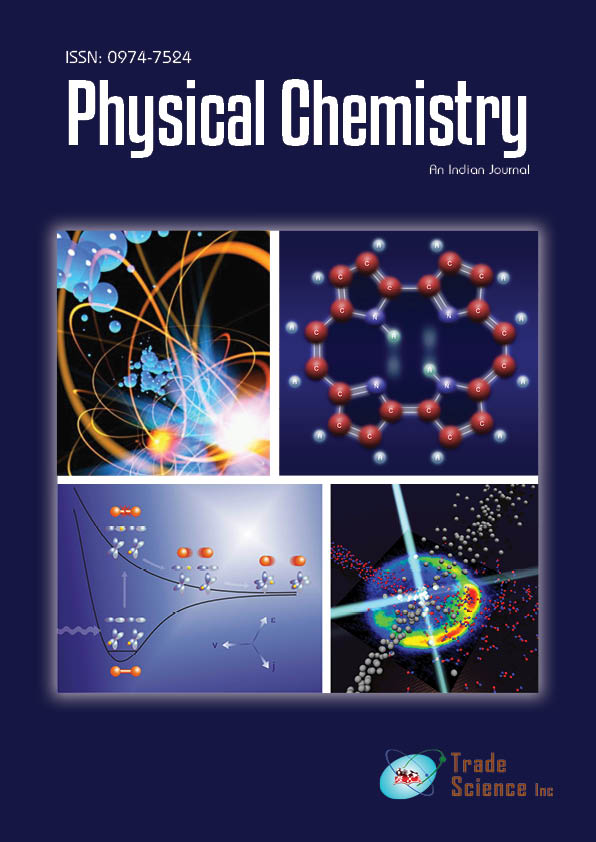Viewpoint
, Volume: 18( 2)Low-Temperature Water-Gas Shift Reaction Interfacial Au/MoC Catalyst
Low-Temperature Water-Gas Shift Reaction Interfacial Au/MoC Catalyst Vandana Pandey1 *, Chiranjeev Bisht2 , Priya Dhami1 1Department of Biotechnology, MBPG College, Haldwani, Uttarakhand. 2Deparment of Chemistry, MBPG College, Haldwani, Uttarakhand. *Corresponding author: Vandana Pandey, Department of Biotechnology, MBPG College, Haldwani, Uttarakhand. Received: 17-Aug-2022, Manuscript No. TSPC-22-79860; Editor assigned: 19-Aug-2022, PreQC No. P- TSPC-22-79860; Reviewed: 07-Oct2022, QC No. TSPC-22-79860; Revised: 12-Oct-2022, Manuscript No. R- TSPC-22-79860; Published: 15-Oct-2022, DOI: 10.37532/2320– 6756.2022.17(5).
Abstract
A crucial process in converting CO-containing gases into high-purity hydrogen is the water-gas shift (WGS) reaction. Yao et al. recently published atomic-layered Au clusters on a-MoC as an interfacial catalyst, which shown exceptional WGS activity at low temperatures in the journal Science.
INTRODUCTION Methane or other hydrocarbons are often processed in steam to create hydrogen. A modest amount (1%–10%) of CO impurity present in the reformed H2-rich fuel can considerably impair the performance of the Pt electrode in fuel-cell systems. The Water-Gas Shift (WGS) reaction (CO + H2O / CO2 + H2) is a well-known method for eliminating the CO and creating extra hydrogen to get high-purity hydrogen for fuel cells. The WGS process is currently catalysed by industrial catalysts based on Fe-Cr or Zn-Al-Cu oxides at temperatures of 620 K–770 K or 470K–525 K, respectively. These catalysts are pyrophoric and typically need time-consuming, difficult activation processes before use. The creation of WGS catalysts that exhibit high activity at lower temperatures is now a research focus in order to eliminate the need for several treatment units in realistic low-temperature fuel-cell systems. In recent years, it has been discovered that the metal-support interactions make noble metals (mostly Pt and Au) supported on a variety of metal oxides (such as ceria, iron oxide, or titania) effective catalysts for the WGS process. But between 393 K and 423 K, none of these systems exhibits activity more than 0.1 molCO/(molmetal s). Because of their intriguing catalytic properties, metal carbides can be good substrates for the dispersion of noble metals.characteristics and capacity to alter a supporting metal's reactivity through chemical bonding [4]. However, there are significant issues with the stability and selectivity [5,6]. Previous research has shown that metal carbides can be particularly effective at cleaving the bond in CO, which can result in the creation of methane or higher alkanes when hydrogen is present [4]. Additionally, the majority of metal carbides are sensitive to O2 or oxygencontaining molecules in the reaction feed, such as H2O. [5,6] Yao et al. recently reported using atomic-layered Au clusters on a-MoC as catalysts for the ultra-low-temperature WGS process in Science[7]. In this interfacial catalyst system, water was activated over α-MoC to give surface OH groups and abstracted hydrogen, and CO became adsorbed on the adjacent Au sites. At the Au/MoC interface, CO and OH reacted to give CO2 and abstracted hydrogen, leading to high WGS activity at low temperatures. Usually, metal carbides are more chemically reactive than oxides, and they are apt to react with H2O at high temperatures [5,6]. In their in operando X-Ray Diffraction (XRD) studies, Yao et al. found that a-MoC was gradually oxidized by water in the reaction feed above 523 K and formed molybdenum oxide. However, ex situ XRD experiments showed that MoC was stable up to 473 K, even at higher water partial pressure. In the reaction feed (mixed-gas CO-H2O diluted by N2), a-MoC itself showed CO conversion of only 3.4% at 393 K. However, for the 2%Au/α-MoC interfacial catalyst, CO conversion reached 95% with an activity of 1.05 molCO/(molAu.s) at 393 K. Obviously, the addition of Au significantly enhanced the activity toward the WGS reactions. Importantly, the catalyst was chemically stable at such low temperatures, and neither the oxidation of α-MoC nor the aggregation of Au clusters was observed. Hydrogen fuel cells usually need a WGS catalyst to be highly active and stable and match the working temperature of on-site hydrogen generation. This finding could improve the performance of the hydrogen-driven fuel cells and thus avoid CO poisoning The scientists created a two-step temperature-programmed surface reaction to better understand the mechanistic features of the 2% Au/α-MoC catalyst system. Active sites over αMoC can dissociate water when H2O/Ar is added to the reactor, resulting in the creation of hydrogen and surface OH species (Figure 1). The number of surface hydroxyls (OH*) and oxygen (O*) grew as the temperature rose from ambient temperature to 473 K. But with the catalysts 2% Au/SiO2 and 2% Au/β-Mo2C, no H2 was found. www.tsijournals.com | October-2022 2 Figure 1. WGS Reaction Path Schematic for Atomically Layered Au Clusters on the α -MoC Catalyst System Diagram of the WGS in Schematic When the flow was changed to CO/Ar, CO began to react with the surface oxygen species, and at about 308 K, CO2 and H2 were found on the 2%Au/ α -MoC catalyst at the same time. Even so, the reforming reaction also took place on an α -MoC catalyst, albeit at a slightly higher initial temperature (347 K), demonstrating the critical role that the synergistic interaction between Au and a-MoC plays in the WGS reaction. Au and aMoC were thought to have a potent metal-support interaction. In fact, XPS experiments showed that the a-MoC substrate had an impact on the electrical structure of the Au species. Two types of Au species were found on the surface of α -MoC by high-resolution Z-contrast scanning transmission electron microscopy: atomically scattered Au and small Au layered clusters epitaxially formed on the α -MoC support. The authors discovered that the layered Au clusters on α -MoC had an even better catalytic efficacy for the low-temperature WGS process than the atomically scattered Au. They investigated the WGS reaction path on the Au/ α -MoC catalyst system using density functional theory calculations. Both thermodynamically and kinetically, it proved challenging to dissociate H2O on Au (111) and monolayer Au/ α -MoC (111). On the other hand, two H2O molecules were easily dissociated into two H* and two OH species over Au15/ α -MoC (111), which represents the interface model of the constructed atomic-layered Au cluster on α -MoC. These species then interacted right away to generate a surface O*. Then, α -MoC (111) and Au15 exhibited a substantially reduced barrier for subsequent O-assisted water dissociation, showing that the first O-H bond of H2O could be easily broken at low temperature on this interfacial catalyst. Additionally, the contact between Au and α -MoC was likely to host the interaction between the adsorbed CO and surface oxygen species. In summary, the molecular design of the Au15/ α -MoC (111) catalyst at the AuMoC interface allows the crucial reaction of surface hydroxyls on MoC and CO on the Au clusters to CO2 and abstracted hydrogen to proceed at low temperatures. This work illustrates the interfacial nature of atomic-layered Au clusters on a-MoC and how it confers the catalyst with outstanding WGS reactivity at very low temperatures. Considering that the catalyst developed in this work is highly active and stable at very low temperatures, the exploitation of such catalyst for on-site hydrogen generation in fuel cells is a promising and challenging avenue for future work. REFERENCES 1. Lin J, Wang A, Qiao B, et al. Remarkable performance of Ir1/FeO x single-atom catalyst in water gas shift reaction. J. Am. Chem. Soc. 2013;135(41):15314-7. 2. Ta N, Liu J, Chenna S, et al. Stabilized gold nanoparticles on ceria nanorods by strong interfacial anchoring. J. Am. Chem. Soc. 2012;134(51):20585-8. 3. Zugic B, Zhang S, Bell DC, et al. Probing the low-temperature water–gas shift activity of alkali-promoted platinum catalysts stabilized on carbon supports. J. Am. Chem. Soc. 2014;136(8):3238-45. 4. Porosoff MD, Yang X, Boscoboinik JA, et al. Molybdenum carbide as alternative catalysts to precious metals for highly selective reduction of CO2 to CO. Angew. Chem. Int. Ed. 2014;53(26):6705-9. 5. Liu P, Rodriguez JA. Water-gas-shift reaction on molybdenum carbide surfaces: essential role of the oxycarbide. J. Phys. Chem. B. 2006;110(39):19418-25. 6. Rodriguez JA, Ramírez PJ, Asara GG, et al. Charge Polarization at a Au–TiC Interface and the Generation of Highly Active and Selective Catalysts for the Low?Temperature Water–Gas Shift Reaction. Angew. Chem. 2014;126(42):11452-6. 7. Yao S, Zhang X, Zhou W, et al. Atomic-layered Au clusters on α-MoC as catalysts for the low-temperature water-gas shift reaction. Science. 2017;357(6349):389-93.

